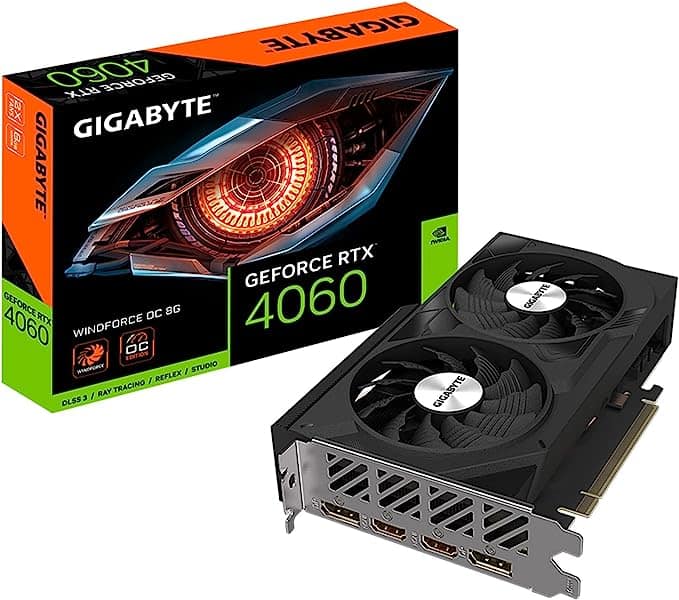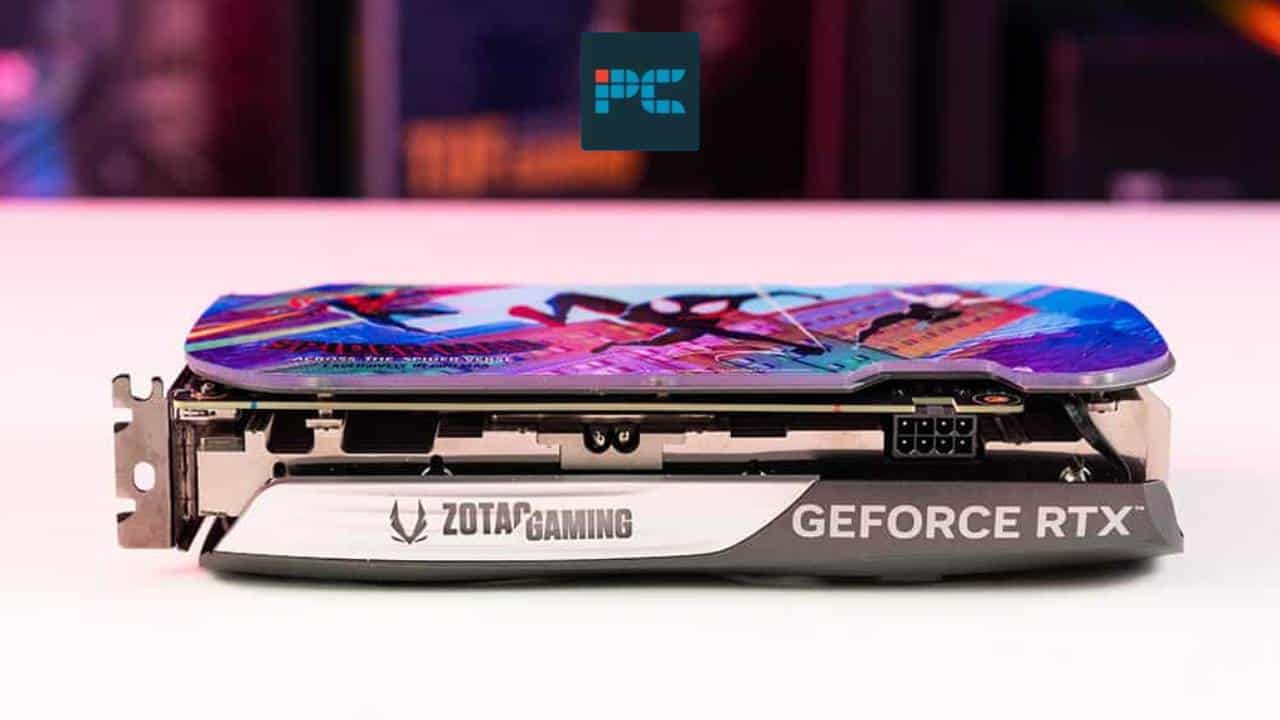In this article, we will delve deep into a comparison of two notable contenders in this market: the NVIDIA GeForce RTX 3070 Ti and the newly launched RTX 4060 graphics card. Both GPUs sit within the mid-range spectrum, but they cater to different segments of consumers. Our primary focus will be to compare their technical specifications, evaluate their capabilities, and offer you a comprehensive perspective on how they stack up against each other in the RTX 4060 vs RTX 3070 Ti debate.
RTX 4060 vs RTX 3070 Ti: Specs
The RTX 3070 Ti, a well-established mid-range GPU, is known for its outstanding performance in the market. It features the GA104 architecture, 6144 cores, 192 texture units, and 48 raytracing cores.
The base clock stands at 1575 MHz and can be boosted up to 1770 MHz. The RTX 3070 Ti Founders Edition is equipped with 8GB of high-speed GDDR6X VRAM and a wider 256-bit memory bandwidth, delivering faster and more efficient gaming frame rates. The TDP of the RTX 3070 Ti is 290W, indicating its impressive performance level and power efficiency.
In contrast, the RTX 4060 is NVIDIA’s newest addition to its mid-range lineup, targeting entry-level gamers who seek good value for their investment. The RTX 4060 is built on the AD106 architecture and houses 3072 cores, 120 texture units, and 30 raytracing cores.
| Specs | RTX 4060 | RTX 3070 Ti |
|---|---|---|
| Architecture | AD106 | GA104 |
| Cores | 3072 | 6144 |
| Texture Units | 120 | 192 |
| Raytracing Cores | 30 | 48 |
| Base Clock | 1830 MHz | 1575 MHz |
| Boost Clock | 2535 MHz | 1770 MHz |
| Memory | 8GB GDDR6 | 8 GB GDDR6X |
| Memory Interface | 128-bit | 256-bit |
| TDP | 115 W | 290 W |
| Price | $299 | $599 |
The inclusion of third-generation ray tracing and DLSS in the Nvidia RTX 4060 gives this GPU a boost in terms of potential performance. The ray tracing capability enables the real-time, cinema-quality rendering of 3D content, while DLSS allows for AI-powered resolution upscaling, improving performance without sacrificing image quality.
While the RTX 3070 Ti has more cores and a larger memory interface that translate into better raw performance, the RTX 4060’s advanced Ada Lovelace architecture and features could offer competitive performance, especially in newer games optimized for these technologies. The tradeoff between raw power and advanced features makes this a fascinating comparison, providing various options for different gamers’ needs and preferences.
RTX 4060 vs RTX 3070 Ti: Performance
The RTX 3070 Ti and RTX 4060, while they both fall under the mid-range category, are targeted at different levels of users and thus offer different performance profiles.
The RTX 3070 Ti, with its ‘Ti’ badge, is a refined version of the already impressive RTX 3070. This GPU doesn’t just cater to hardcore gamers looking to push their in-game settings to the max, but it also serves as a capable companion for professional content creators.
With 8GB of GDDR6X memory and a 256-bit memory interface, it’s capable of handling resource-intensive tasks such as 4K video editing, 3D modeling, and high-resolution gaming with relative ease.
The RTX 4060, on the other hand, is more of a dark horse in this race. While its 3072 cores and 120 texture units may fall short compared to the RTX 3070 Ti, the new architecture and tech it brings to the table can’t be underestimated.
The advanced AD106 architecture and the inclusion of third-generation ray-tracing cores, frame generation, and DLSS means that this GPU is well-equipped to handle the demands of newer games optimized for these features. This makes the RTX 4060 a very viable option for gamers who want to experience the latest gaming technology without breaking the bank.
Overall, while the RTX 3070 Ti may offer superior raw performance due to its increased core counts and higher clock speeds, the RTX 4060’s advanced architecture and features make it a worthy competitor, offering excellent performance in its own right.
RTX 4060 vs RTX 3070 Ti: Price
The RTX 3070 Ti, with its ‘Ti’ badge, always carried a premium price, but the question was whether the increase in price matched the boost in performance. When it launched, it was priced at $599, a significant bump from its non-Ti counterpart.
While the 3070 Ti certainly offers a leap in performance, especially for 1440p gaming and professional applications, many argue that the increased cost doesn’t entirely justify the performance upgrade.
On the flip side, Nvidia seems to have struck a balance with the pricing of the RTX 4060. Priced at just $299, it presents a far more affordable option for many consumers. The RTX 4060 might not match the 3070 Ti in raw power, but the incorporation of advanced features like third-generation ray tracing and DLSS, coupled with a highly competitive price, make it a compelling option.
RTX 4060 vs RTX 3070 Ti: Conclusion
In terms of raw performance, the RTX 3070 Ti still holds a formidable position, particularly for high-end 1440p gaming. However, the price-performance ratio of the RTX 4060 makes it a potentially superior choice for a broader range of consumers, if availability isn’t a concern at release. The addition of DLSS and third-generation ray tracing tech also give it a significant edge in modern gaming scenarios, even without the raw power of the 3070 Ti.
Ultimately, the true test of the RTX 4060 will be its average FPS performance in 1440p gaming. If it can deliver on this front while maintaining its competitive pricing, it could well be crowned the best Nvidia mid-range GPU on the market. But until we get those numbers, it’s a waiting game.








